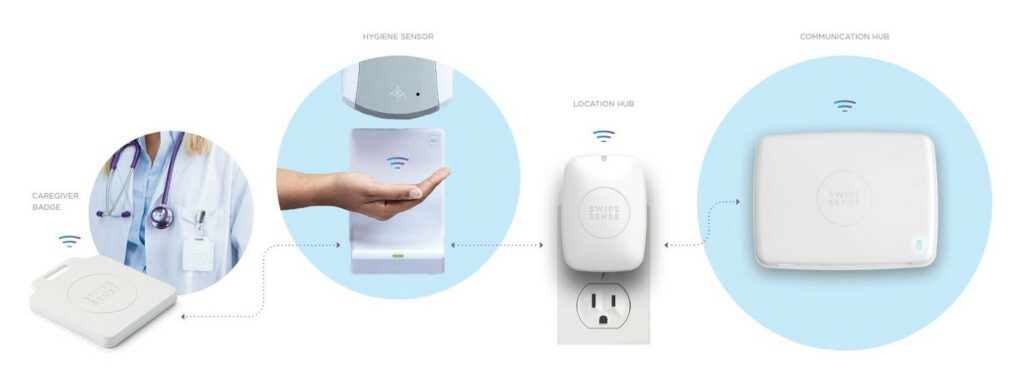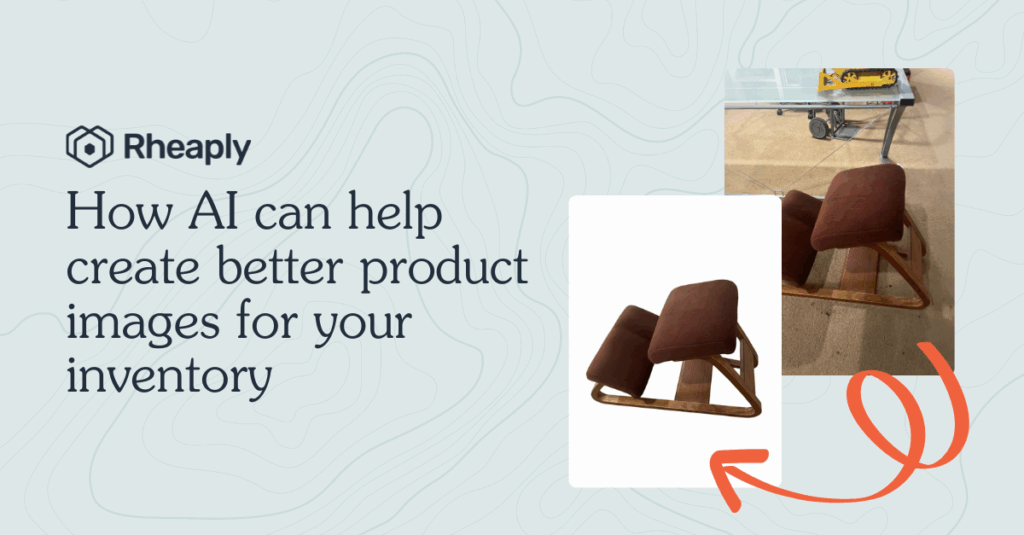During this time of global and national crisis, companies are doing their best to help protect our vulnerable communities, especially those on the frontlines of the pandemic. An innovative company and Rheaply partner, SwipeSense, is actively helping protect the safety of healthcare workers and patients during this challenging time with their hand hygiene technology. We had some questions for SS, here are some of their answers. Thanks for your amazing work, SS!

SwipeSense interview
Rheaply: With hospitals around the country currently inundated with patients due to the rapid spread of the coronavirus, are you concerned about the potential increase in the number of hospital acquired infections? Should Americans be concerned about putting themselves at risk of hospital acquired infections by going to get tested at their local hospitals?
SS: To ensure the safety of themselves and others, we recommend that patients follow the most up to date guidelines and recommendations provided by the CDC, public health agencies, and their local authorities in regard to when they should seek medical care.
In any instance when receiving care, hand hygiene is one of the most critical parts of preventing the spread of hospital-acquired infections, including the virus that causes COVID-19. Now more than ever, we hope SwipeSense monitoring technology provides a reliable way for hospitals to track and ensure proper hand hygiene behavior, mitigating the spread of harm. We have been closely monitoring hand hygiene compliance rates across SwipeSense hospitals and have seen significant compliance increases on a daily basis. Notably, at a 220-bed facility in the Midwest, compliance rates have increased by nearly 20%, reaching over 80% compliance and the number of facilities in the 80% compliance range have more than doubled over the past few weeks.
Exposure tracking is also as important as preventive measures like hand hygiene, in the urgent effort to mitigate and contain further spread and keep staff safe. Most hospitals are relying on manual processes, such as electronic record chart trace backs and even staff recollection to determine which team members entered a room or came into contact with an infected person. These processes take hundreds of hours — even in a more predictable and treatable outbreak. Our electronic Hand Hygiene monitoring and Nursing Insights applications automatically track every entry and exit of staff in patient rooms. As a result, hospitals with SwipeSense technology can quickly report on all staff who interacted with a patient, entered a room, performed an hourly round, or performed a bedside shift handoff with another nurse or physician, allowing for prompt notification of exposure and reducing the risk for both staff and patients.
Rheaply: How is SwipeSense monitoring the usage data for each hospital worker? With higher than normal usage expected from hospital workers, how will real-time data be processed and tracked efficiently?
SS: SwipeSense generates location and movement data via hardware installed that essentially creates a GPS network in the facility. Hospital staff wear SwipeSense caregiver badges, which capture their hand hygiene performance. Upon using soap and sanitizer at the right time, in the right area, a caregiver is marked compliant for that hygiene opportunity. On a normal day in a hospital, there are an average of 100 hand hygiene opportunities per occupied room. As hospitals experience maximum capacities and severe acuity cases that require extra care, the number of hygiene opportunities is unsurmountable.
Web-based user dashboards provide room-level data for facility, department, unit, and staff members, calculating the amount of time they spent in the room and whether they performed hand hygiene upon entry and exit of every visit longer than 60 seconds. With a fixed amount of time and staff on hand, accurate, real-time location data is critical to prevent further exposure as quickly as possible. We have already received feedback from organizations, noting how valuable this data is for operational efficiency during this emergency circumstance.
We recognize that hospitals are drastically overwhelmed with an unprecedented and unpredictable flow of patients. Generally, hospitals stakeholders, such as Infection Prevention teams, Nurse Managers, and other Executives, regularly check compliance rates via the SwipeSense Hand Hygiene dashboard. Given time and resource constraints as a result of COVID-19, we know these teams have limited time to monitor the data. Enter here: Our dedicated Customer Success team. This group is closely monitoring compliance rates across our existing customer base, and thoughtfully reaching out to key hospital stakeholders with identified high risk units in the hospital. They are also on standby for any ad-hoc support, ensuring program integrity and answering any questions on feature utilization that can help staff mitigate spread and keep people safe.
We’re also hearing that many organizations have shifted from using SwipeSense hand hygiene data on a bi-monthly or monthly basis, to building it into their operating plans as part of COVID-19 response. Compliance data is being used much more regularly so that improvement areas are being addressed in real time, rather than addressed at a later time.
Rheaply: When hospital workers are in contact with Covid-19 infected patients, will their Caregiver Badges also potentially be a carrier for the virus (since they are attached to workers’ uniforms)?
SS: Hospitals are taking the necessary and recommended precautions to protect healthcare workers with Personal Protective Equipment (PPE). If a SwipeSense Caregiver Badge is attached to a uniform worn under PPE gear, the badge will continue to signal the individual’s use of soap or sanitizer when they enter and exit a patient room. We have also conducted thorough cleaning studies and have found that non-bleach disinfectant products can be used to sanitize the badges.
Rheaply: Are Caregiver Badges only used by hospital workers? Can patients/family members waiting in hospitals also use facility soap/sanitizer dispensers to sanitize their hands?
SS: The use of gel dispensers in patient areas is up to the discretion and guidelines of hospital facilities. SwipeSense Caregiver Badges are only worn by hospital staff, allowing nursing managers or infection prevention teams to measure and track hand hygiene performance as healthcare workers enter and exit patient rooms.
Thank you SwipeSense for sharing stories of your hand hygiene technology with us! You’re doing amazing work!
